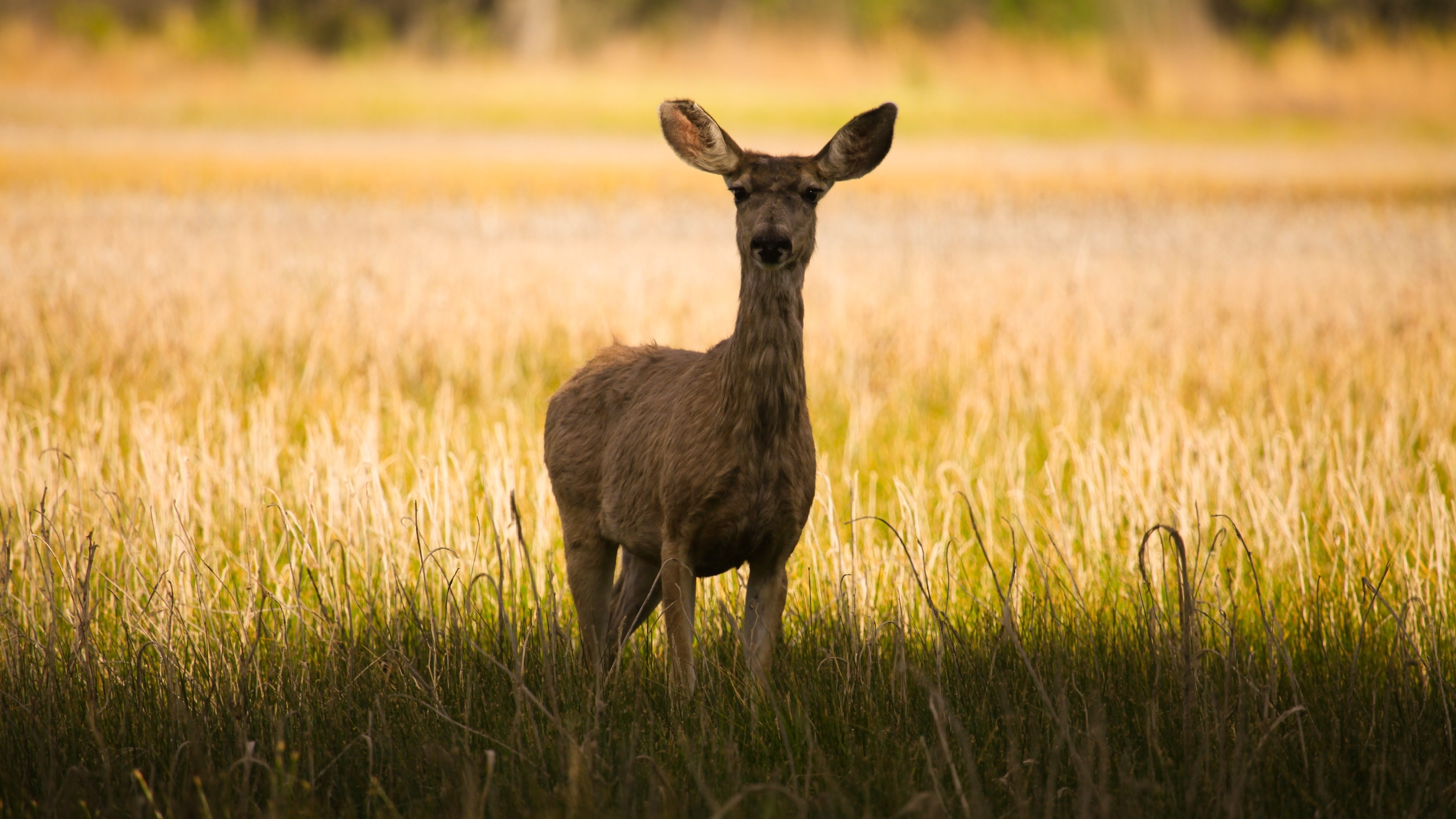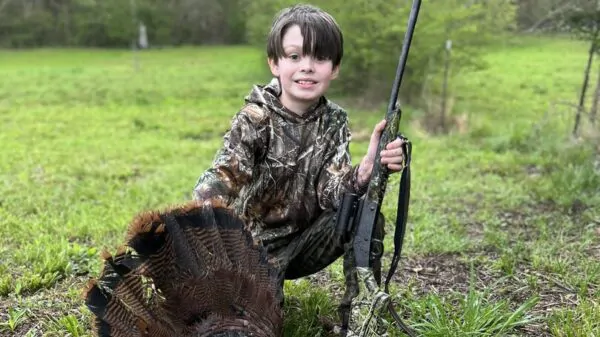Fall and Winter are celebrated by southerners for football and deer season. Under Alabama law, hunters are limited to just three bucks per year in this state. Since taking three bucks is relatively easy in Alabama, many Alabama hunters cross state lines in pursuit of more hunting opportunities.
Unfortunately, Chronic Wasting Disease (CWD) continues to spread across the nation. Alabamians were shocked by the discovery that CWD has spread all the way to neighboring Mississippi.
In the wake of the confirmed of CWD in Mississippi’s deer herd, the Alabama Department of Conservation and Natural Resources Wildlife and Freshwater Fisheries (WFF) Division has responded by adding Mississippi to the list of states where special precautions were in effect to minimize the chance of spreading the disease.
It is now forbidden to import the complete carcasses from members of the cervid family (deer, elk, moose, caribou, etc.) from any other state and Canada.
The rules requires that hunters should completely debone the animal and remove and dispose of any brain or spinal tissue from skull plates, raw capes and hides before returning to Alabama. Those skull plates must be free of any brain or spinal cord material. Velvet-covered antlers are also included in the prohibited materials. Root structures and other soft tissue should also be removed from all teeth. Finished taxidermy products and tanned hides are not affected by the ban.
Additionally. beginning with the 2019-2020 seasons, Alabama will ban the use of natural deer urine products as well. Synthetic deer urine products are not affected.
CWD is a terminal illness similar to mad cow disease in cattle and scrapie in sheep. CWD is a form of transmissible spongiform encephalopathy that starts to debilitate the affected animal and always results in death.
Hunting is a $1.8 billion industry in Alabama, with deer hunting the most popular species pursed by Alabama hunters.
While the ban on imported deer carcasses affects everyone, Alabamians who live on the state line who typically hunt on both sides of the line need to be acutely aware of where they are hunting. Taking a complete deer carcass to your
The WFF outreach on CWD education will ramp up significantly right away with seminars, billboards and media promotions.
“We are doing our seminar series that will focus on CWD,” said WFF Director Chuck Sykes, who travels the state to conduct the seminars.
“We are purchasing billboard advertisement up and down our major road systems,” Sykes said. “We’re also doing some outreach at gas pumps and ice machines at convenience stores in strategic places around the state.”
Sykes said there is so much misinformation in the public square, whether online or around the campfire, that WFF is doing everything it can to ensure people are getting the correct information.
Sykes said the decision to ban natural deer urine products after the upcoming seasons was done to err on the side of caution.
“We knew that people already had orders,” he said. “We knew stores had the product on the shelf, and manufacturers already had purchase orders. The Board expressed a desire to ban urine products, so we made our recommendation to start the ban in 2019. So, hunters can buy and use those natural deer urine products through the upcoming season, but starting in the fall of 2019, they won’t be able to use them.
“It’s just a precaution. We know the prion (rogue protein) that causes CWD can be found in urine, saliva and feces. That’s just one hole that we can plug. A lot of the facilities that bottle urine are in states with CWD. We just don’t want to take that risk. Granted, it’s not as big of a risk as bringing in a live deer or a deer carcass, but it’s a risk we don’t want to take.”
Most CWD-positive states have experienced a slow but gradual spread of additional cases once the disease is established. However, there have been a few exceptions. Mississippi has tested about 650 deer since that one incident and hasn’t found any other infected deer at this point. Sykes said only one state other than Mississippi, New York, had a confirmed case of CWD in 2005 and no other deer have tested positive since.
“The best thing we can do is to keep CWD out of our state,” said Conservation Commissioner Chris Blankenship. “We’ve passed the regulations regarding bringing carcasses into Alabama. The best offense is to play good defense to keep it out of Alabama.
“I think a lot of people are getting the message, but we still have a lot of work we need to do,” Blankenship said. Some people think CWD is so far away that it doesn’t affect us. When it showed up in Mississippi, it put a lot of people on notice that it is a lot closer to us than it had been and that we need to be very vigilant to keep it out of our state by being mindful of what we do.”
There is no scientific evidence of any transmission of CWD to domestic livestock or humans; but much of Alabama’s rural economy depends on hunting and the revenue generated by the sport which has a $1.6 billion a year economic impact to the state. While Alabama is also rich in turkey, quail, doves, geese, rabbits, squirrels, feral hogs and other game species, deer hunting is by far the biggest economic driver of the hunting economy.
Chris Cook, Deer Project Program Leader for the WFF, said that in states with confirmed cases, a containment zone, usually a 5-mile radius, is established. The deer density is then established and a specific number of samples is taken for testing. If more positives are confirmed, the containment zone is expanded until officials can determine the distribution of the disease.
“Then you move forward with management actions to contain the disease,” Cook said. “You encourage people to harvest deer to keep the population down, not to eradicate it. That’s been shown not to work. You just try to limit the spread of the disease inside the containment zone.”
Cook has been in touch with the Mississippi Wildlife, Fisheries and Parks officials to get information on the positive CWD deer.
“It was on a hunting club,” Cook said. “They had seen the deer for three days. One of the hunters was on a food plot. He watched the deer come in, and it was staggering around. It fell down and died while the hunter was there. They contacted the wildlife department, and unfortunately it tested positive. And this was the county where they had taken the most samples from doing CWD surveillance. It certainly caught them by surprise. It just shows you everybody needs to remain vigilant to report dead and dying deer so we can get samples to find out why that deer was in that condition. And we need the public to remain vigilant.”
“Mississippi has implemented its CWD response plan, which is exactly what needs to be done,” said University of Georgia School of Veterinary Medicine professor John Fischer, who heads the Southeastern Cooperative Wildlife Disease Study. “It’s unlikely there will ever be a smoking gun indicating how the disease got there. It just needs to be dealt with. And the response needs to be adaptable as more information becomes available.”
Fischer said that the prion (an abnormal protein) that causes the disease is virtually impossible to eliminate. “That’s one of the big confounders of management. The prion can persist in the environment and remain infectious for we don’t know how long. Even if you were able to remove every susceptible animal out there and hold the ground open, we don’t know how long you would have to wait to repopulate the area. I don’t think anybody knows.”
“All you can do is do the best you can to prevent the introduction of the disease into the state,” Dr. Fischer said. “Early detection is going to give you a better success of managing the disease. In areas where the disease appears endemic, the primary goal is to slow down geographic spread. Eradication doesn’t appear reasonable at this stage.”
According to researchers at The University of Texas Health Science Center at Houston (UTHealth), grass plants can bind, uptake and transport infectious prions, which are much smaller than bacteria. Prions are single proteins that cannot be destroyed by typical “kill strategies” such as extreme heat or ultraviolet light.
“With prions, nothing like that works,” said Claudio Soto, Ph.D., a UTHealth researcher and lead author of an article about the topic published May 26, 2015, in Cell Reports.
Prions are protein-based infectious agents that cause the characteristic spongy degeneration of the brain, leading to emaciation, abnormal behavior, loss of bodily functions, and death.
Soto’s team analyzed the retention of CWD and other infectious prion proteins and their infectivity in wheat grass roots and leaves that had been incubated with prion-contaminated material. They discovered that even highly diluted amounts of the material can bind to the roots and leaves. From there, they fed the wheat grass to hamsters, which became infected with the disease. The team also found the infectious prion proteins in plants that had been exposed to urine and feces from prion-infected hamsters and deer. The team found that plants can uptake prions from contaminated soil and transport them to different parts of the plant. By doing this, the plants can act as a carrier of CWD. Dr. Soto has suggested that plants may play an important role in environmental prion contamination and the horizontal transmission of the disease. (Horizontal transmission occurs when an infectious agent is transmitted between members of the same species.) Scientists already knew that these CWD prions are good at binding to soil, especially clay-based soils, and that they can persist there. Soto said that when some of the soil where an infected dead animal had been buried was injected into research animals several years after it had been buried, the injected animals came down with prion disease.
Soto warns that there is a good possibility that prions have been progressively accumulating in the environment.
In 1985 the Colorado Division of Wildlife tried to eliminate CWD from a research facility by treating the soil with chlorine, removing the treated soil, and applying an additional chlorine treatment before letting the facility remain vacant for more than a year, they were unsuccessful in eliminating CWD from the facility.
“It underscores the nasty nature of this disease and the challenge it is to manage it on a natural landscape,” said Matt Dunfee, coordinator of the Chronic Wasting Disease Alliance. “It’s hard to contain, especially when it spreads through the soil or on plants. We haven’t been able to eliminate it on a natural landscape known to be infected.”
There has never been a deer to human transmission of a prion disease; but the CDC (Centers for Disease Control and Prevention) caution hunters to avoid eating meat from deer that appear to be infected and to wash hands and utensils thoroughly after processing a deer carcass.
Cook warned everyone to be vigilant, “f they see a carcass that looks suspicious or a live animal being transported, contact one of our district offices or call the 24-hour hotline (Operation GameWatch 1-800-272-4263).”
Bow season for deer in Alabama begins on October 15.
(Original reporting by the Food Safety News’s Phil McCausland and Outdoors Alabama’s David Ranier as well as consultation with Medicenet, and Wikipedia contributed to this report)



















































